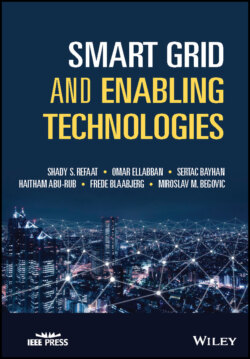Читать книгу Smart Grid and Enabling Technologies - Frede Blaabjerg - Страница 42
1.7.5 Reliability and Power Quality
ОглавлениеThe SG utilizes technologies such as improved fault detection, state estimation, and enabling self‐healing of the network without the need for specialized personnel. This leads to a reliable supply of electricity and minimized vulnerability to attacks or natural disasters. Smart grid operates resiliently in disasters and during physical, or cyber‐attacks. Advanced control methods and monitoring oversee essential elements of the grid, enable rapid diagnosis and solutions to events that affect the grid's integrity, power quality, and smooth operation. The grid can monitor both on‐line and in real‐time as well as assess its current state and predict its future situation. The SG has robust risk warning procedures to employ preventive capabilities, automatic fault diagnosis, self‐fault isolation, and self‐restoration [48]. With all‐new energy resources and entities, optimization and handling the system will become more challenging, even with the availability of new technologies and tools. Interdependencies and interactions between distribution and transmission systems will keep rising. The increase in the grid's complexity will require many technological, computational, and business operation requirements such as [49, 50]:
1 Self‐learning systems.
2 Increased coordination between transmission‐level balancing areas as well as additional balancing abilities at the distribution level.
3 Balancing abilities using both load‐side and supply‐side operations.
4 Privacy and security to be applied in all parts of the system, down to end‐use devices.
5 PnP capabilities in SG enhanced levels.
